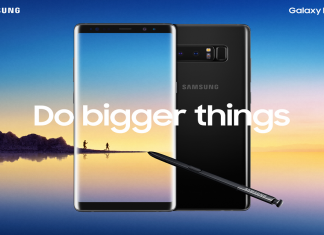“Time is relative,” is a famous saying that Einstein used in his Theory of Relativity. It means that the rate at which time passes depends on your perspective. Even though we have very different views about time, everyone relies on measuring it. To be more specific, everyone relies on how accurate our timepieces should tell time. This is because measuring time helps us manage our everyday lives. Without clocks and watches, we would never be able to tell what our last schedule of the day is, or when’s the next mealtime, or when’s the next payday would be! If every timepiece just suddenly stopped working, the life we have will never be the same again!
Life is always in constant motion, and so is time. We have been trying to measure it in different ways since the dawn of man. From using sundials and candle clocks, to hourglasses, to watches, we’ve come a long way.
We’ve even come up with newer and better ways for telling time. We can see that man has come up with more accurate and more reliable methods for telling time. This time (pun intended), we’re going to talk about timepieces that don’t rely on the sun. Some of them use crystals to make them more reliable and most would only need a manual rewind every now and then. Some of them even use your own arm as their source of energy!
Contents
Tick Tock
For modern watches, movement means the heart of the watch. Different watches have different hearts, or mechanisms that make the hands work. Almost all watches use the same mechanism that creates the same “ticking” motion. This fuels the seconds, minutes, and hours to move at the same time. Some wrist watches use batteries, and some use kinetic energy. Some people who still own older versions would even do a manual rewind of their watch every morning. The reason why they’re described as timeless is they never seem to go out of style or of their purpose no matter what century it is.
Analog Watches
The most common ones are analog watches. They show traditional or Roman numerals and rely on batteries to let them tell time. These watches are mechanical and would have to change batteries every few years.
Analog watches have been around since the 15th century. Some say that the first wristwatches date back to 1810, and would even date back to 1570! They were first described as an arm watch. Wristwatches were mainly worn by women and the men used pocket watches. This was because they were prone to damage by the elements.
Quartz Watches
There are also wristwatches that we would call quartz watches. These watches are like analog watches but are more accurate. They operate by using an electronic oscillator that powers a quartz crystal. Then, when an electric current passes through the crystal, it then vibrates. a quartz crystal always vibrates at 32768 per second. Knowing this, a circuit measures how many times the crystal vibrates. On a stepping motor, it then converts it to a single pulse per second. This sets the watch’s hands in motion. This ensures that the movement of the hands will always be consistent and reliable.
Quartz watches are also very convenient! Unlike analog watches, quartz watches don’t have to change batteries every few years. Since they have fewer moving parts, they are much more durable and can last a lifetime! Because of this, they are less expensive and easier to make.
Mechanical Watches
I would say that one of the most complicated timepieces I have seen would be a mechanical watch. Complicated would be an understatement. You could say that mechanical watches are simply art itself. Because these types of watches are spring-driven, they are very delicate.
If you would have the chance to look under the watch’s face, you would see a whole different world. Besides seeing no batteries in place, you would see a world of complex engineering. You would see an almost endless spiraling journey of moving cogs and circling gears. This fuels the ticking of the mechanical watch’s hands with elegance and grace.
Mechanical watches are sometimes called automatic watches or “self-winding watches”. This is because they lack batteries, or in other words, they don’t need one. These watches use a different form of energy: kinetic energy.
Watches use the earth’s gravitational pull for energy. They equip the watch with a weight that swings back and forth like a pendulum, creating tension. The tension then compresses the mainspring through the random motion of the arm. After the spring has been wound, the spring then transfers the energy to its other springs. Next, those springs then release the energy from the mainspring through a barrel. This powers up the gear trains.
They then transfer the energy to the watch’s hands to tell time. Some watches can only tell time as long as the wearer does random motions with his/her hand. Automatic watches are self-winding watches, and if fully wound, can tell their time up to 40 hours.
Some watches even have a sapphire casing on the back so you can see its gears turn and rotate when counting! This is why mechanical watches are sometimes described as collector’s items and timepieces. They always show one of the most beautiful and detailed ways of telling time.
A Timeless Timepiece
There is so much more to know about a wristwatch than having its purpose seen as only telling time. It can tell stories and personalities of its previous owner. You can change its designs like skx007 chapter ring or simply replace the plain watch hands into something more.
Unlike smartwatches or digital watches, a quality wristwatch can last for generations. Some are even passed as an heirloom, one that could last a couple of lifetimes. Smartphones and smartwatches cannot even begin to compare on quality alone. Since they only last a few months becoming obsolete, no other item can even have a more sentimental value. Having a lasting wristwatch is a classic piece of art that could be more valuable the more you wear it. They may not be the most cutting edge of its tech, but it’s a guarantee that they’d last more than a couple of decades.




























![Best Websites Like Pubfilm Online to Watch Movies [2021]](https://www.mobupdates.com/wp-content/uploads/2019/03/adult-beautiful-blur-1040159-218x150.jpg)
![Call of Duty Mobile APK for Android and iOS Coming Soon: Pre-Register Free [2021] Call of Duty Mobile](https://www.mobupdates.com/wp-content/uploads/2019/03/Call-of-Duty-Mobile-218x150.png)






 Online casino
Online casino
